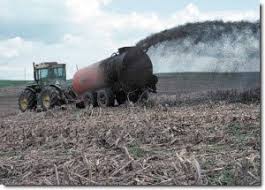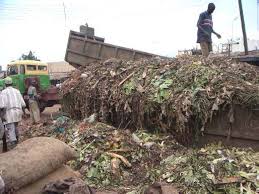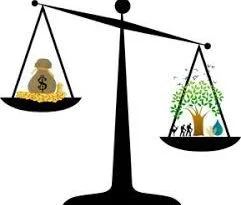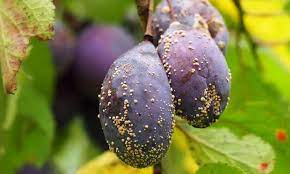Impact of Agricultural Wastes on Human and Environment
The impact of agricultural waste on the environment depends not only on the amounts generated but also on the disposal methods used. Some of the disposal practices pollute the environment.
For example, agricultural waste burning is a common practice in the undeveloped countries, but it is a source of atmospheric pollution. According to (Ezcurra, 2001), agricultural waste burning releases pollutants such as carbon monoxide, nitrous oxide, nitrogen dioxide and particles (smoke carbon).
These pollutants are accompanied by the formation of ozone and nitric acid, hence contributing to acid deposition thereby posing risk to human and ecological health.
Environmental pollution from animal waste (faeces, urine, and respiration and fermentation gases) is a global concern and is much more acute and serious in countries with high concentrations of animals on a limited land base for manure disposal.
Animal wastes are excreted in solid, liquid, and gaseous forms. Respiration and fermentation gases are lost to the environment soon after being produced by the animal. After excretion, solid and liquid animal waste is subjected to microbial conversion (mainly anaerobic), which converts organic substrates into microbial biomass and soluble and gaseous products.
Some of these products have an impact on the environment, as well as water quality, soil deterioration, and air pollution.
Odor pollution was reported to contribute highly to social tensions among urban livestock farmers. Additionally, the application of excessive animal wastes on land as fertilizer and soil conditioner is subject to surface run-off and leaching that may contaminate ground or surface waters.
For that reason, nitrate leaching is considered a major nitrogen pollution concern on livestock farms. When phosphorus (P) enters the surface waters from land application of excessive animal manure it can stimulate the growth of algae and other aquatic plants.
Their subsequent decomposition results in an increased oxygen demand that interferes with the welfare of fish. Manure decomposition can be a major source of methane (CH4), ammonia (NH3) and nitrogen oxides, which contribute to accumulation of greenhouse gases.

Synthetic fertilizers have been at the core of the Green Revolution, but there is awareness that their widespread and intensive use represents a serious threat for the environment. Global data for maize, rice and wheat indicate that crops take up only 18% to 49% of N applied as fertilizer; the remainder is lost to run-off, leaching or volatilization.
Widespread use of pesticides on crops has led to the emergence of many pesticide-resistant pests and pathogens. Paradoxically, research demonstrated that insecticides, by suppressing the natural enemies of pests, lead to increased pest damage in crops.
Moreover, pesticides also have a major impact on animal and human health. People can be exposed to excessive pesticide levels while working, via food, soil, water, air or by directly ingesting pesticide products.
Along with other synthetic chemicals, some pesticides have a direct effect on the reproductive system of many higher organisms, acting as endocrine disruptors and inducing severe reproductive problems and modifying sexual behavior.
It is demonstrated that an organic diet provides a dramatic and immediate protective effect against exposures to organo-phosphorus (pesticides that are commonly used in agricultural production) in children who are most likely exposed to these organo-phosphorus pesticides exclusively through their diet.
Agriculture is also responsible for 30–35% global greenhouse gases (GHGs) emission, largely from tropical deforestation, methane emission from livestock and rice cultivation and NOx from fertilized soil and its energetic efficiency, as output/input, is steadily decreasing.
Read Also : General Impact of Wastes on Environment
Agricultural activities (excluding forest conversion) account for approximately 5 percent of anthropogenic emissions of CO2 and the 10–12% of total global anthropogenic emissions of GHGs accounting for nearly all the anthropogenic methane and one- to two-thirds of all anthropogenic nitrous oxide emissions are due to agricultural activities.
In conclusion, the discharge of effluent to environment increasingly affects the natural ecosystem and human health and his environment. On the other hand, agricultural wastes contribute tremendously to the effervescence of greenhouse gas, which is of global concern. This calls for approach toward environmental pollution abatement; prevention at the source is the best alternative.



